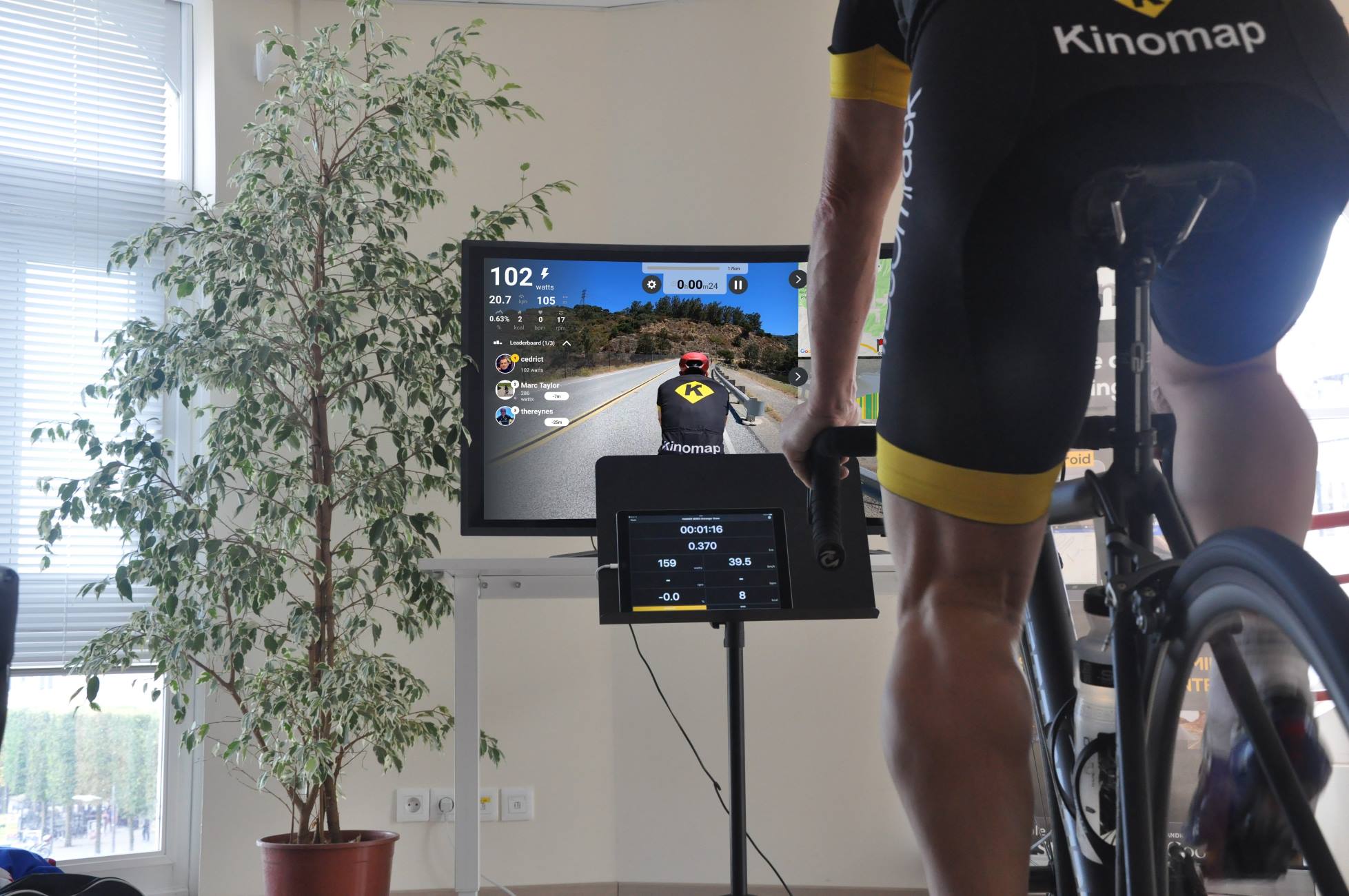Home>Training & Techniques>Effective Speedwork For Runners Of All Levels


Training & Techniques
Effective Speedwork For Runners Of All Levels
Published: March 5, 2024
Improve your running performance with effective speedwork training & techniques for all levels of runners. Maximize your potential and achieve your goals.
(Many of the links in this article redirect to a specific reviewed product. Your purchase of these products through affiliate links helps to generate commission for Therunningadvisor.com, at no extra cost. Learn more)
Table of Contents
- The Benefits of Incorporating Speedwork into Your Running Routine
- How to Tailor Speedwork to Your Current Fitness Level
- Sample Speedwork Workouts for Beginner, Intermediate, and Advanced Runners
- Tips for Maximizing the Effectiveness of Your Speedwork Sessions
- Common Mistakes to Avoid When Implementing Speedwork into Your Training
The Benefits of Incorporating Speedwork into Your Running Routine
Incorporating speedwork into your running routine can yield a multitude of benefits, regardless of your current fitness level. Whether you're a novice runner or a seasoned athlete, integrating speedwork can significantly enhance your overall performance and bring about positive changes in your running abilities. Here are some compelling reasons why you should consider adding speedwork to your training regimen:
-
Improved Speed and Endurance: Engaging in speedwork sessions, such as interval training and tempo runs, can effectively boost your running speed and endurance. By alternating between periods of high-intensity effort and recovery, your body adapts to sustained exertion, ultimately leading to enhanced performance during races and long-distance runs.
-
Enhanced Cardiovascular Fitness: Speedwork challenges your cardiovascular system, leading to improved heart and lung function. This type of training increases your body's ability to utilize oxygen efficiently, thereby enhancing overall cardiovascular fitness and endurance.
-
Increased Caloric Expenditure: Intense speedwork sessions elevate your heart rate and metabolism, resulting in a higher caloric burn compared to steady-state running. This can be particularly beneficial if weight management or fat loss is one of your fitness goals.
-
Muscle Strength and Power: Speedwork engages fast-twitch muscle fibers, which are crucial for generating explosive power and speed. By incorporating sprints, hill repeats, and other high-intensity exercises, you can strengthen these muscle fibers, leading to improved running economy and overall strength.
-
Mental Toughness and Focus: Enduring the challenges of speedwork cultivates mental resilience and fortitude. Pushing through discomfort and fatigue during intense intervals can bolster your mental toughness, preparing you to tackle the mental hurdles often encountered during races and demanding training sessions.
-
Variety and Fun: Introducing speedwork into your running routine adds variety and excitement to your training. Breaking away from monotonous, steady-paced runs can inject a sense of fun and adventure into your workouts, keeping you motivated and engaged.
Incorporating speedwork into your running routine can yield a multitude of benefits, regardless of your current fitness level. Whether you're a novice runner or a seasoned athlete, integrating speedwork can significantly enhance your overall performance and bring about positive changes in your running abilities.
How to Tailor Speedwork to Your Current Fitness Level
Tailoring speedwork to your current fitness level is essential for maximizing the benefits of this training method while minimizing the risk of injury or burnout. Whether you're a beginner, intermediate, or advanced runner, customizing your speedwork sessions to align with your current capabilities is crucial for long-term progress and performance improvement.
Beginner Runners
For novice runners, incorporating speedwork should be approached with caution and gradual progression. Begin by integrating short bursts of speed into your regular runs. This can involve incorporating short intervals of increased pace, such as running at a faster speed for 30 seconds to 1 minute, followed by a period of active recovery at an easy pace. As your fitness improves, gradually increase the duration and intensity of these intervals.
Another effective approach for beginners is incorporating fartlek training, which involves alternating between periods of faster running and slower jogging. This unstructured form of speedwork allows beginners to gradually acclimate to increased intensity while maintaining a sense of spontaneity and enjoyment in their workouts.
Intermediate Runners
Intermediate runners who have developed a solid aerobic base can benefit from more structured speedwork sessions. Introduce interval training, which involves alternating between periods of high-intensity running and active recovery. For example, you can start with 400-meter repeats at a challenging but sustainable pace, followed by a recovery jog. As your fitness progresses, you can increase the distance and intensity of the intervals.
Incorporating tempo runs is also beneficial for intermediate runners. These runs involve sustaining a comfortably hard pace for an extended period, typically ranging from 20 to 40 minutes. Tempo runs help improve lactate threshold and overall race pace, making them valuable additions to an intermediate runner's training regimen.
Advanced Runners
Advanced runners with a strong running foundation can incorporate more advanced speedwork techniques to further enhance their performance. This may include high-intensity interval training (HIIT) sessions, hill repeats, and track workouts. HIIT sessions involve short, maximal efforts followed by brief recovery periods, effectively challenging the cardiovascular system and improving speed and power.
Hill repeats are another valuable tool for advanced runners, as they help build strength and power while improving running economy. Additionally, track workouts, such as 800-meter or 1,600-meter repeats at race pace, can fine-tune an advanced runner's speed and endurance, preparing them for peak performance in races.
By tailoring speedwork to your current fitness level, you can effectively harness the benefits of this training method while minimizing the risk of overexertion and injury. Whether you're a beginner, intermediate, or advanced runner, customizing your speedwork sessions to align with your current capabilities is crucial for long-term progress and performance improvement.
Sample Speedwork Workouts for Beginner, Intermediate, and Advanced Runners
Beginner Runners
For beginner runners, incorporating speedwork should be approached with a focus on gradual progression and building a strong foundation. A sample speedwork workout for beginners could involve incorporating short bursts of speed into their regular runs. This can be achieved by running at a faster pace for 30 seconds to 1 minute, followed by a period of active recovery at an easy pace. As their fitness improves, beginners can gradually increase the duration and intensity of these intervals. Another effective approach for beginners is incorporating fartlek training, which allows for unstructured speedwork by alternating between periods of faster running and slower jogging. This method enables beginners to acclimate to increased intensity while maintaining a sense of spontaneity and enjoyment in their workouts.
Intermediate Runners
Intermediate runners who have developed a solid aerobic base can benefit from more structured speedwork sessions. A sample speedwork workout for intermediate runners could involve interval training, where they alternate between periods of high-intensity running and active recovery. For example, they can start with 400-meter repeats at a challenging but sustainable pace, followed by a recovery jog. As their fitness progresses, they can increase the distance and intensity of the intervals. Incorporating tempo runs is also beneficial for intermediate runners. These runs involve sustaining a comfortably hard pace for an extended period, typically ranging from 20 to 40 minutes. Tempo runs help improve lactate threshold and overall race pace, making them valuable additions to an intermediate runner's training regimen.
Advanced Runners
Advanced runners with a strong running foundation can incorporate more advanced speedwork techniques to further enhance their performance. A sample speedwork workout for advanced runners may include high-intensity interval training (HIIT) sessions, hill repeats, and track workouts. HIIT sessions involve short, maximal efforts followed by brief recovery periods, effectively challenging the cardiovascular system and improving speed and power. Hill repeats are another valuable tool for advanced runners, as they help build strength and power while improving running economy. Additionally, track workouts, such as 800-meter or 1,600-meter repeats at race pace, can fine-tune an advanced runner's speed and endurance, preparing them for peak performance in races.
By tailoring speedwork to their current fitness level, runners can effectively harness the benefits of this training method while minimizing the risk of overexertion and injury. Whether they are beginners, intermediate, or advanced runners, customizing speedwork sessions to align with their current capabilities is crucial for long-term progress and performance improvement.
Tips for Maximizing the Effectiveness of Your Speedwork Sessions
To ensure that your speedwork sessions yield optimal results and contribute to your overall running performance, it's essential to approach them with a strategic mindset and a focus on key elements that can maximize their effectiveness. Here are valuable tips to help you make the most of your speedwork sessions:
1. Establish Clear Objectives
Before embarking on a speedwork session, define specific objectives tailored to your current training phase and goals. Whether you aim to improve your 5K race pace, enhance endurance for longer distances, or boost overall speed, having clear objectives will guide the structure and intensity of your speedwork sessions.
2. Prioritize Adequate Warm-Up and Cool-Down
Proper warm-up and cool-down routines are crucial for preparing your body for the demands of speedwork and facilitating efficient recovery. Prioritize dynamic warm-up exercises to activate key muscle groups and gradually elevate your heart rate. Following the speedwork session, engage in a thorough cool-down to aid in the gradual reduction of heart rate and prevent muscle stiffness.
3. Focus on Quality Over Quantity
When it comes to speedwork, quality trumps quantity. Instead of fixating on the volume of repetitions or intervals, prioritize the quality of each effort. Maintain proper form and technique during high-intensity segments, ensuring that each repetition reflects your targeted pace and effort level.
Read more: Effective Circuit Workouts For Runners
4. Listen to Your Body
While pushing your limits is an inherent aspect of speedwork, it's equally important to listen to your body's signals. Pay attention to signs of excessive fatigue, discomfort, or potential injury during speedwork sessions. Adjust the intensity or volume of the workout if necessary to prevent overexertion and minimize the risk of injury.
5. Incorporate Adequate Recovery Periods
Integrating sufficient recovery periods between high-intensity intervals is essential for allowing your body to adapt and benefit from the training stimulus. Balancing work and rest intervals ensures that your body can effectively recover and perform optimally during subsequent repetitions.
6. Monitor Progress and Adjust Accordingly
Regularly monitor your progress by tracking key performance indicators such as pace, heart rate, and perceived exertion during speedwork sessions. Use this data to make informed adjustments to your training plan, gradually increasing the intensity or volume as your fitness improves.
7. Stay Hydrated and Nourished
Proper hydration and nutrition play a vital role in optimizing the effectiveness of speedwork sessions. Ensure that you are adequately hydrated before and during the workout, and replenish your body with a balanced post-workout meal or snack to support recovery and muscle repair.
By implementing these tips, you can maximize the effectiveness of your speedwork sessions, leading to tangible improvements in speed, endurance, and overall running performance. Embrace a mindful and purposeful approach to speedwork, and reap the rewards of this dynamic training method.
Common Mistakes to Avoid When Implementing Speedwork into Your Training
Implementing speedwork into your training regimen can yield remarkable benefits, but it's essential to navigate this training method with caution and awareness. Avoiding common mistakes associated with speedwork is crucial for maximizing its effectiveness while minimizing the risk of injury and burnout. Here are the key pitfalls to steer clear of when incorporating speedwork into your training:
1. Neglecting Proper Warm-Up and Cool-Down
Failing to prioritize a thorough warm-up and cool-down routine can significantly increase the risk of injury during speedwork sessions. Inadequate warm-up may lead to muscle strains or pulls, while neglecting the cool-down phase can impede proper recovery and contribute to post-workout stiffness.
2. Overambitious Progression
One of the most prevalent mistakes is progressing too rapidly in terms of intensity, volume, or frequency of speedwork sessions. Pushing the body beyond its current capabilities without allowing for gradual adaptation can lead to overtraining, fatigue, and heightened susceptibility to injuries.
3. Ignoring Rest and Recovery
Underestimating the importance of rest and recovery periods between speedwork sessions can impede the body's ability to adapt and benefit from the training stimulus. Inadequate recovery can hinder performance improvements and increase the likelihood of overuse injuries.
4. Lack of Consistency
Inconsistency in incorporating speedwork into your training regimen can hinder progress and limit the potential benefits of this training method. Irregular or sporadic implementation of speedwork may lead to suboptimal adaptations and hinder overall performance improvements.
5. Disregarding Proper Form and Technique
Engaging in speedwork with compromised form and technique can not only diminish the effectiveness of the training but also increase the risk of injury. Maintaining proper running mechanics and posture during high-intensity efforts is essential for maximizing the benefits of speedwork while minimizing the risk of musculoskeletal issues.
6. Failure to Listen to Your Body
Disregarding the body's signals and pushing through excessive fatigue or discomfort during speedwork sessions can lead to overexertion and potential injury. It's crucial to recognize the difference between productive discomfort and harmful strain, adjusting the intensity or volume of the workout as needed.
7. Inadequate Hydration and Nutrition
Neglecting proper hydration and nutrition before, during, and after speedwork sessions can compromise performance and impede recovery. Maintaining adequate fluid intake and fueling the body with essential nutrients is vital for optimizing the effectiveness of speedwork and supporting overall training adaptations.
By steering clear of these common mistakes, you can approach speedwork with a mindful and strategic mindset, harnessing its full potential to enhance your speed, endurance, and overall running performance. Embrace a balanced and progressive approach to speedwork, and reap the rewards of this dynamic training method.











